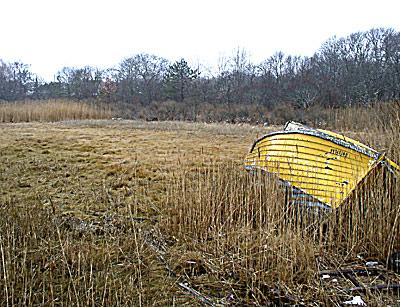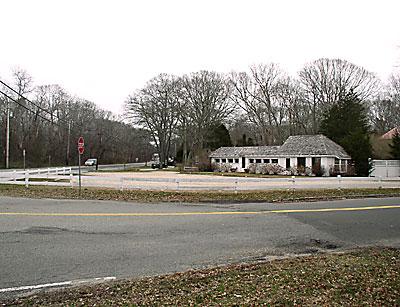Z.B.A. Dilemma Arises on Lake Montauk Condos
Z.B.A. Dilemma Arises on Lake Montauk Condos

When is a story not a story? That was the knotted yarn the East Hampton Town Zoning Board of Appeals tried untangling on Tuesday night.
North Harbor Realty, a limited liability corporation held in part by the Kalimnios family, longtime Montauk resort and hotel owners, was before the board requesting relief from the town prohibition against third floors for seven condominium units it plans at 374 West Lake Drive in Montauk.
As is frequently the case on the East End, with its many low-lying areas, septic systems, which must comply with strict county regulations, dictate the placement of proposed structures. In this case, the 3.4-acre property, on Lake Montauk, contains wetlands, which limit the building area.
The condos were planned as two-story units, with 500 square feet on each floor, in two buildings. The catch is, according to the applicants, that in order to comply with the septic system requirements, the structures would have to be hoisted seven to eight feet above street level. That would create a ground level, or third floor.
But John M. Wagner, the applicant’s attorney, argued that the ground level should not be considered a story. “Is it really a story?” Mr. Wagner asked. “Well, you wouldn’t see it from the street. We call it a crawl space for good reason. There will be no interior access to the space.” The only way to gain access, Mr. Wagner said later, would be through a single outside door.
“It will look to an onlooker like a one-story building or, at most, a two-story building,” Mr. Wagner said, explaining that a street-side retaining wall is to be built and the land behind it gently graded up to at least seven feet, hiding the ground floor. He added that the town’s height limit of 35 feet would not be exceeded.
“It’s a variance without a difference,” Mr. Wagner concluded.
The difference, however, was of note to Jeremy Samuelson, an environmental advocate with the Group for the East End and Concerned Citizens of Montauk, who spoke on behalf of the organizations.
“If you decide you’re going to ignore zoning standards, you are effectively lowering the bar on standards that everyone is held to,” he said. “Live up to standards that were put in place . . . designed to ensure minimum resource protection.”
Another issue, according to Mr. Samuelson, is that a mound of brown dirt appeared on the site. About 10 feet tall and 30 feet wide, it seemed to have debris in it, including pieces of PBX pipe, which is supposed to be contained in bales of hay according to the code.
Mr. Wagner said the dirt had been brought in because the property required fill. An opportunity arose to obtain the dirt, he said, and the required bales had been put in place after the applicants were notified of the requirement. Mr. Wagner told the board the applicants would be happy to test the dirt and haul it away if necessary.
Mr. Wagner, asked about the implications of a precedent being set by approval of the three-story buildings, said variances should be issued on a case-by-case basis. Mr. Samuelson scoffed at that idea.
“No lawyer will ever tell you they’re setting a precedent until the next time they show up, when they’ll say, ‘But you gave this neighbor this or that’. ” He noted the recent purchases of Lenny’s and Salivar’s restaurants as potential sites for redevelopment. They are also on the water. No decisions were made.
Before the hearing ended, Irene D’Agostino, who owns an adjacent parcel and is a Montauk real estate broker, spoke of the Kalimnios family. “They have always done well by the Montauk community.”

